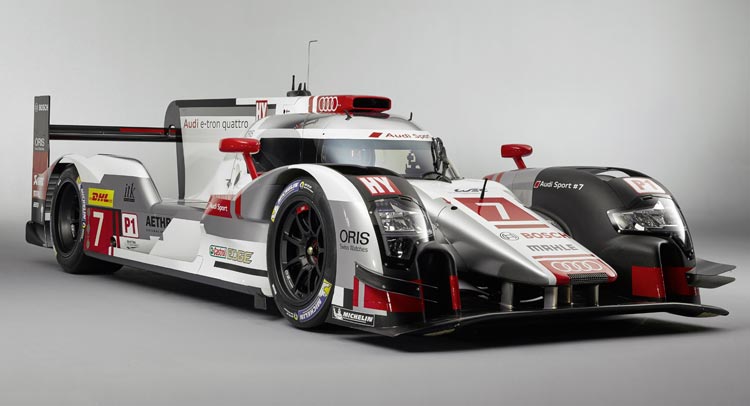A decade ago fuel-efficiency had nothing to do with race cars, and bringing it up could have been considered a blasphemy. But in 2015, manufacturers brag about their race cars being more economical, as Audi does with its revised R18 E-Tron Quattro endurance racer.
For the 2015 season of the FIA World Endurance Championship (WEC), the hybrid race car has received a series of upgrades, consisting of a more powerful hybrid system, revised aerodynamics and increased fuel efficiency.
Audi designers have found a new way of conducting airflow around and through the front end, in the area of the side pods and at the rear of the LMP1 prototype, resulting in a different look of the car. The R18 E-Tron Quattro features large air inlets in the front wheel arches, an all-new design of the headlights and new front wing and wheel arches. Audi will use two body versions for the various tracks on the FIA WEC calendar.
The R18 E-Tron Quattro gets a double amount of energy from 2 to 4 megajoules per race lap at Le Mans. During braking, energy is recovered and subsequently fed back to the front axle on acceleration. The electrical machine that performs this task now delivers an output of more than 200 kW (272PS), a significant increase compared to last year.
As a consequence, Audi has increased the capacity of the energy storage system as well. The encapsulated flywheel energy storage system that sits in the cockpit alongside the driver can store up to 700 kilojoules of energy that it subsequently returns to the electrical machine – that’s about 17 percent more than in 2014.
To comply with regulations, the R18 E-Tron Quattro has to use 2.5 percent less diesel fuel per lap than in 2014, which is why the 558PS (550hp) 4.0-liter V6 TDI engine has been optimized to achieve the desired consumption levels.















